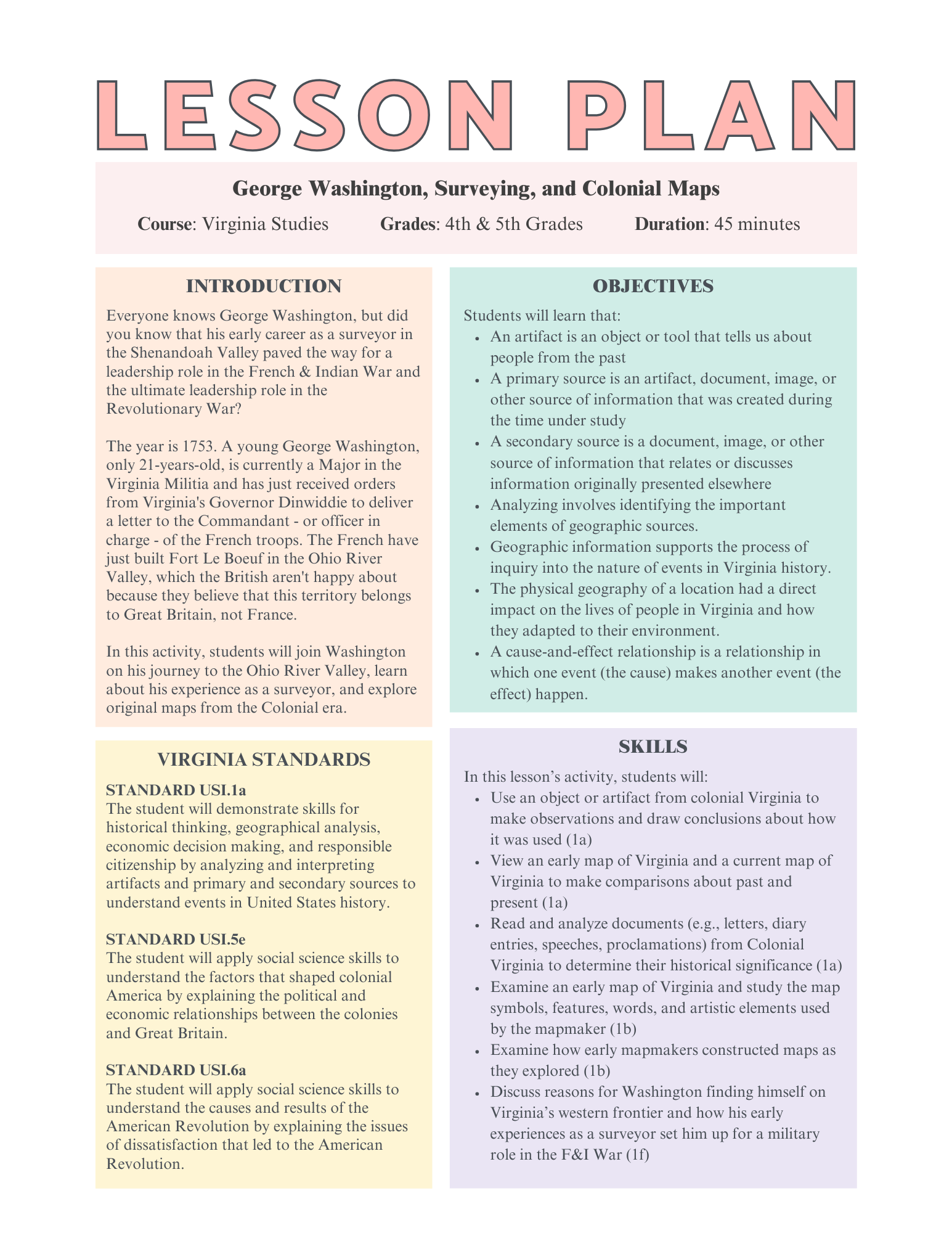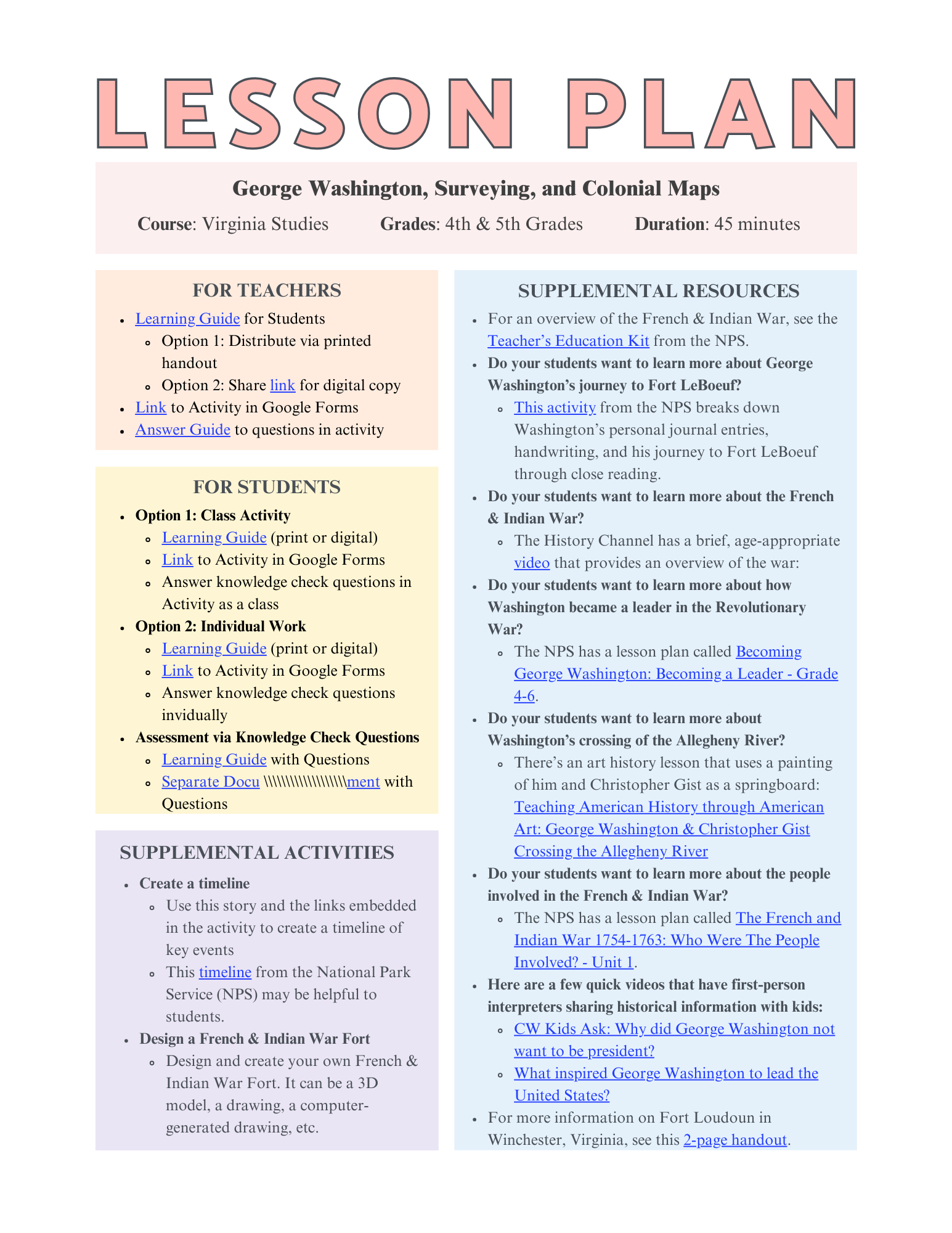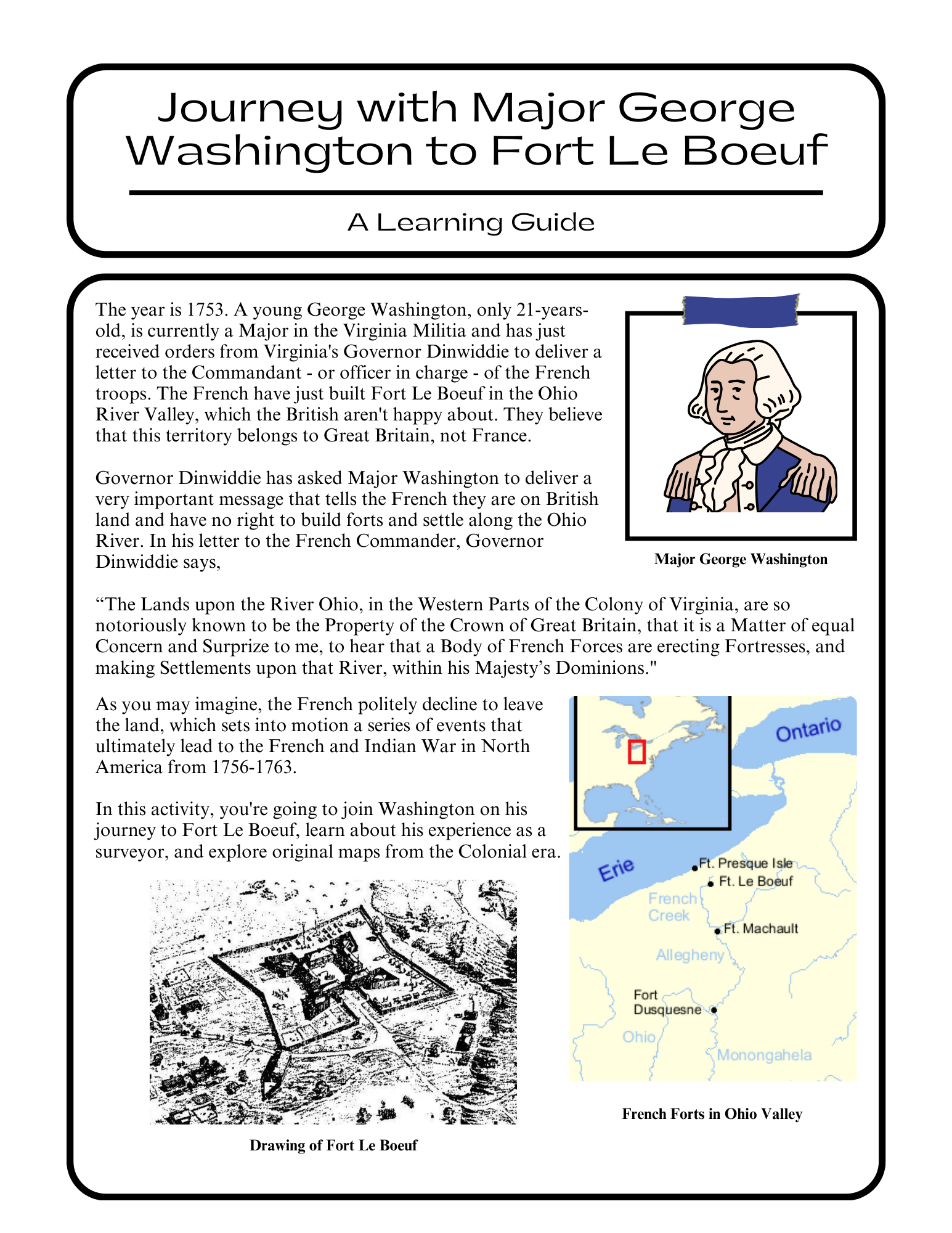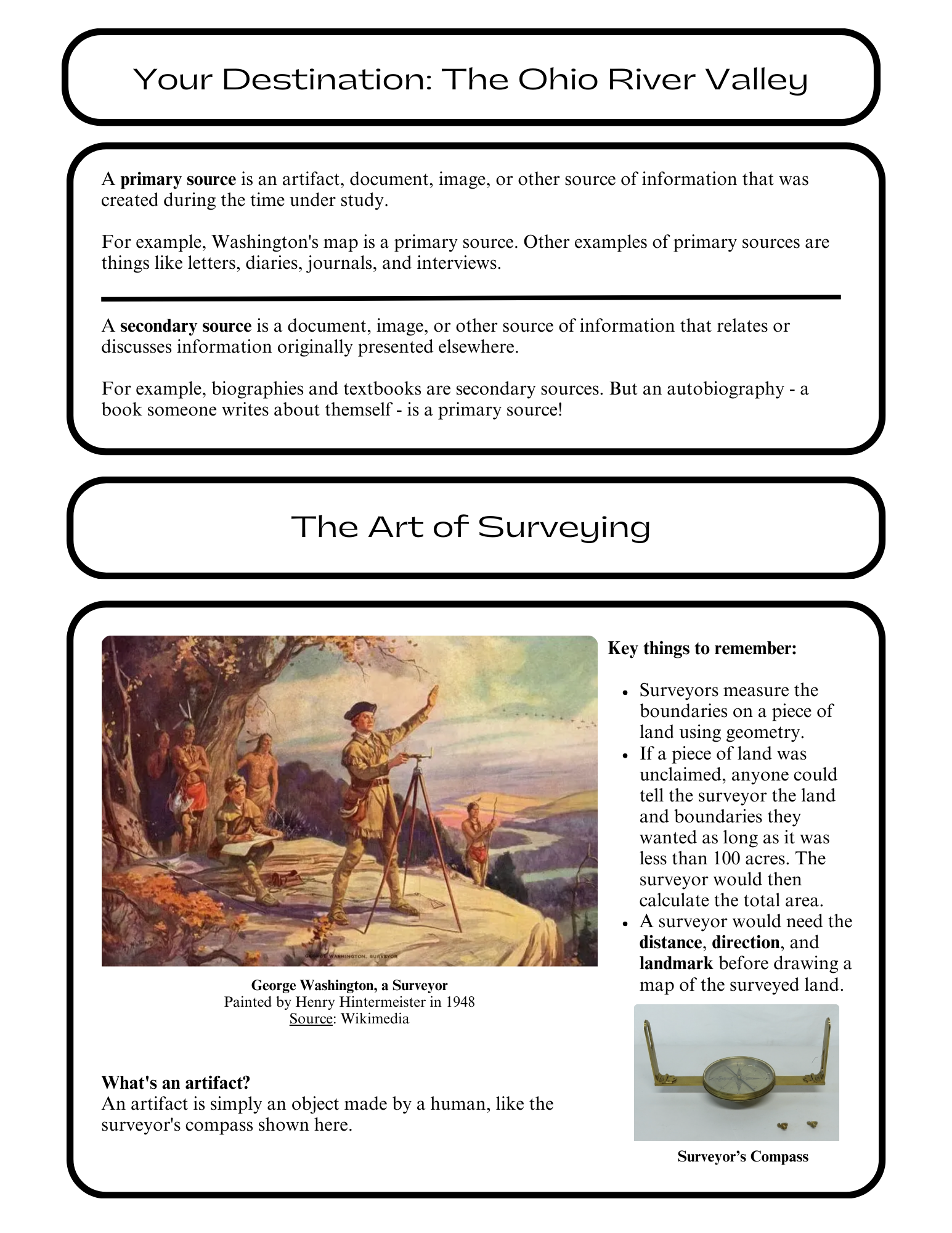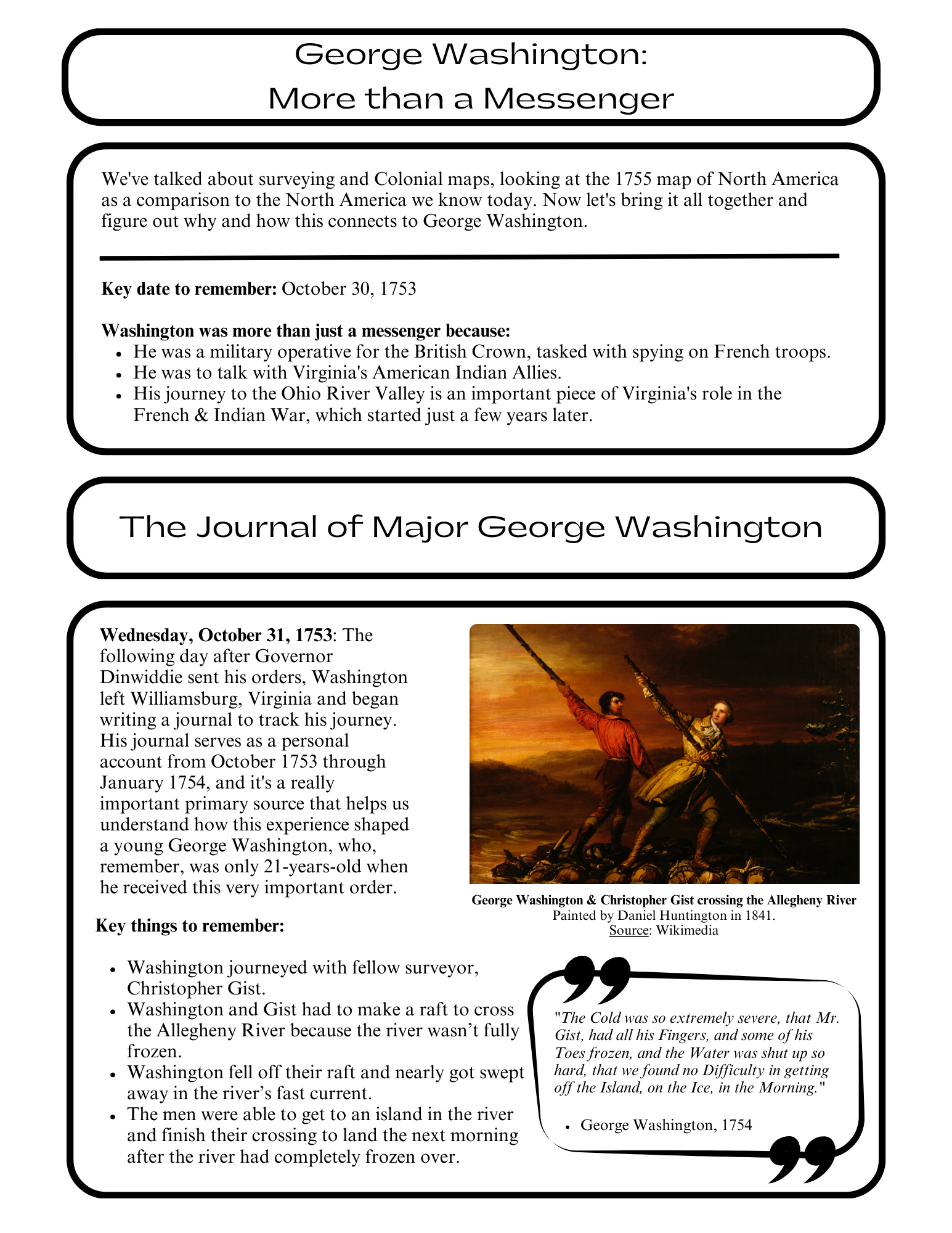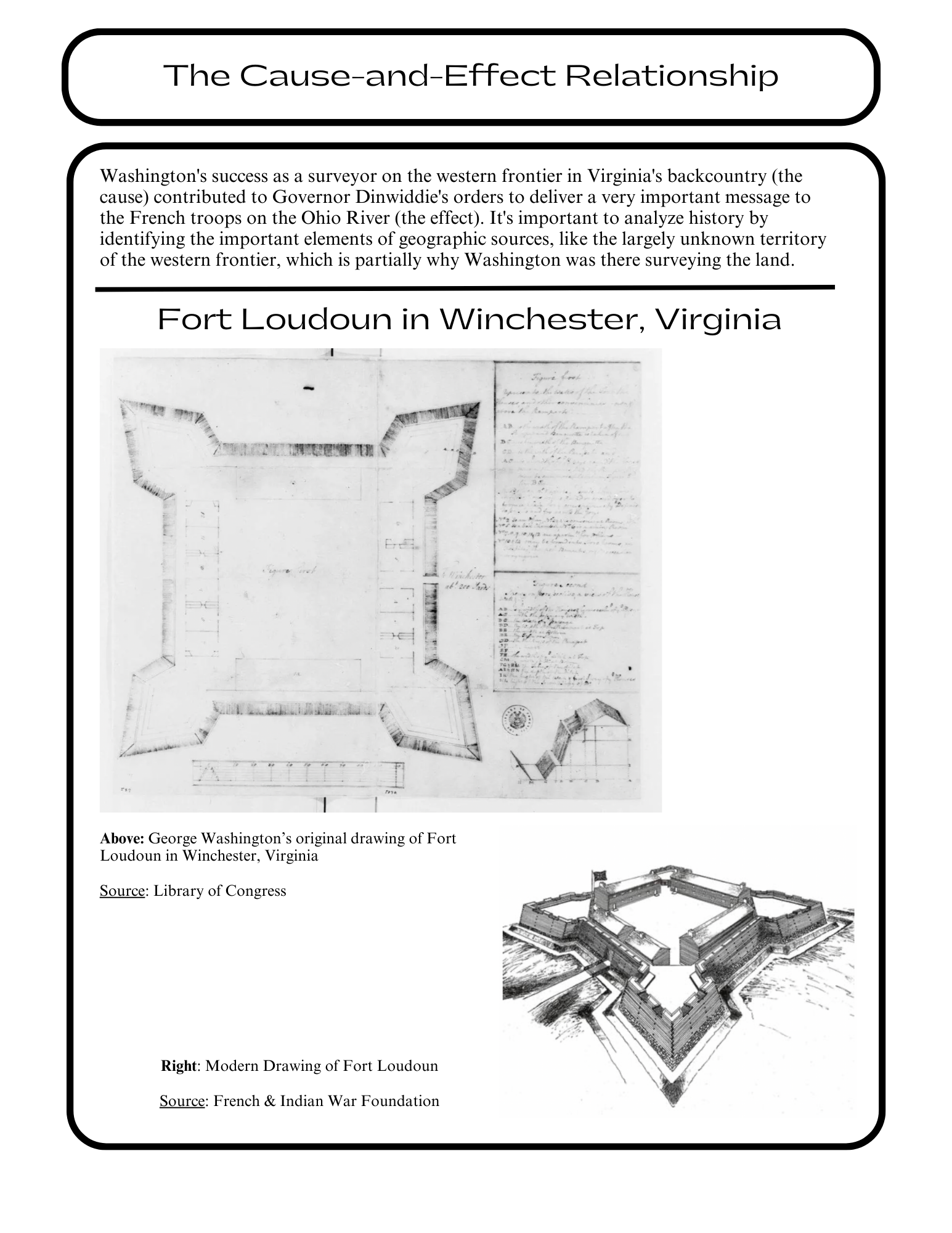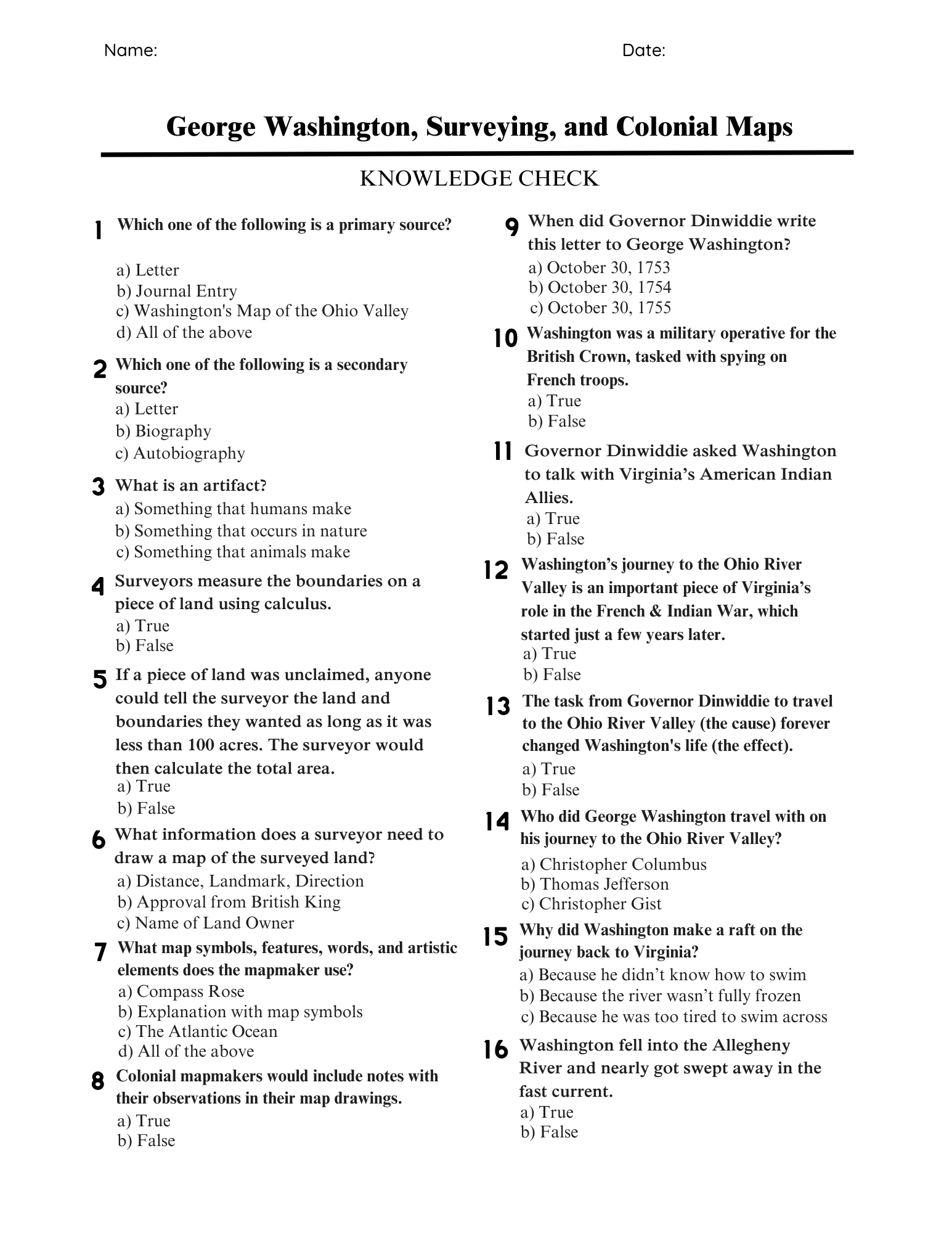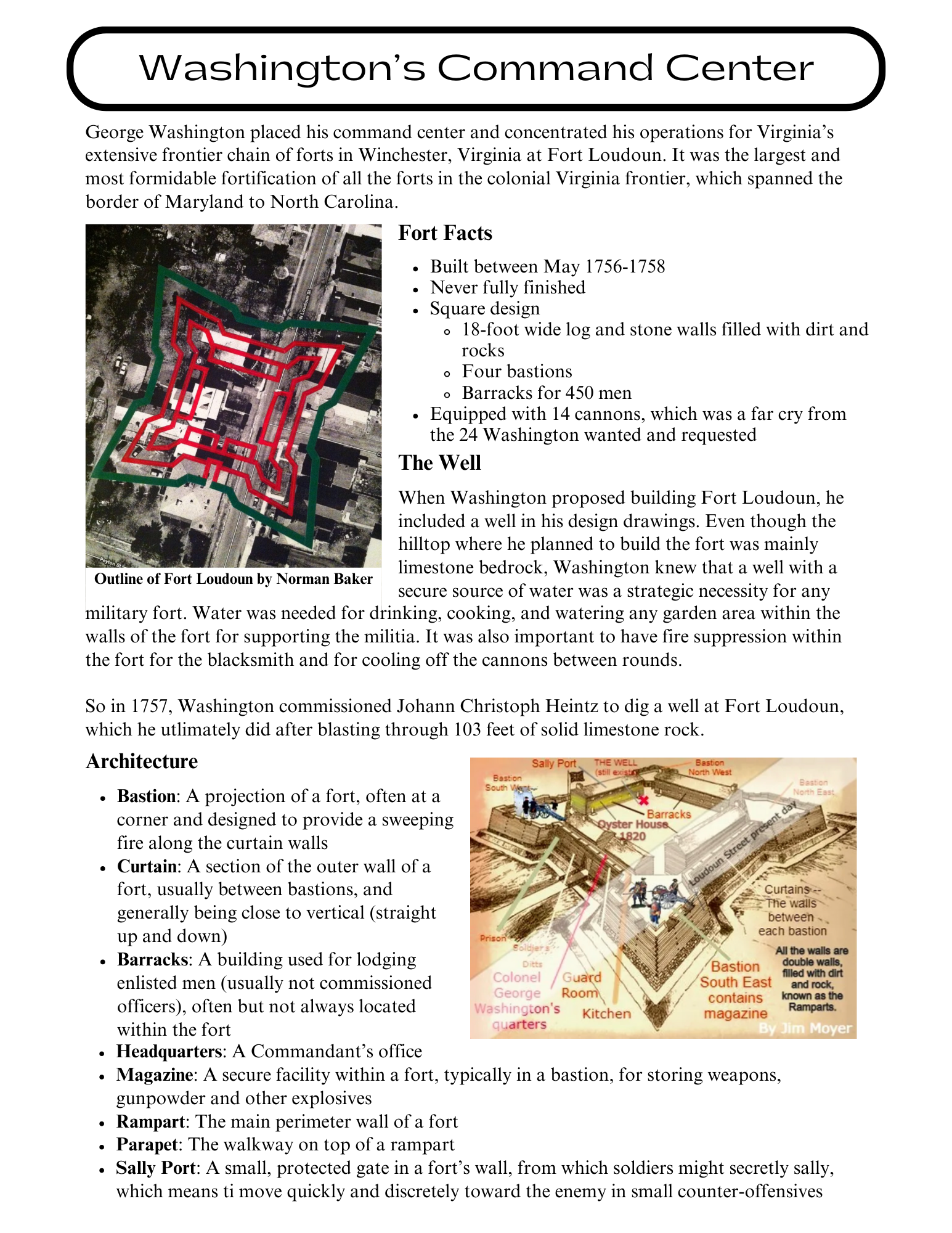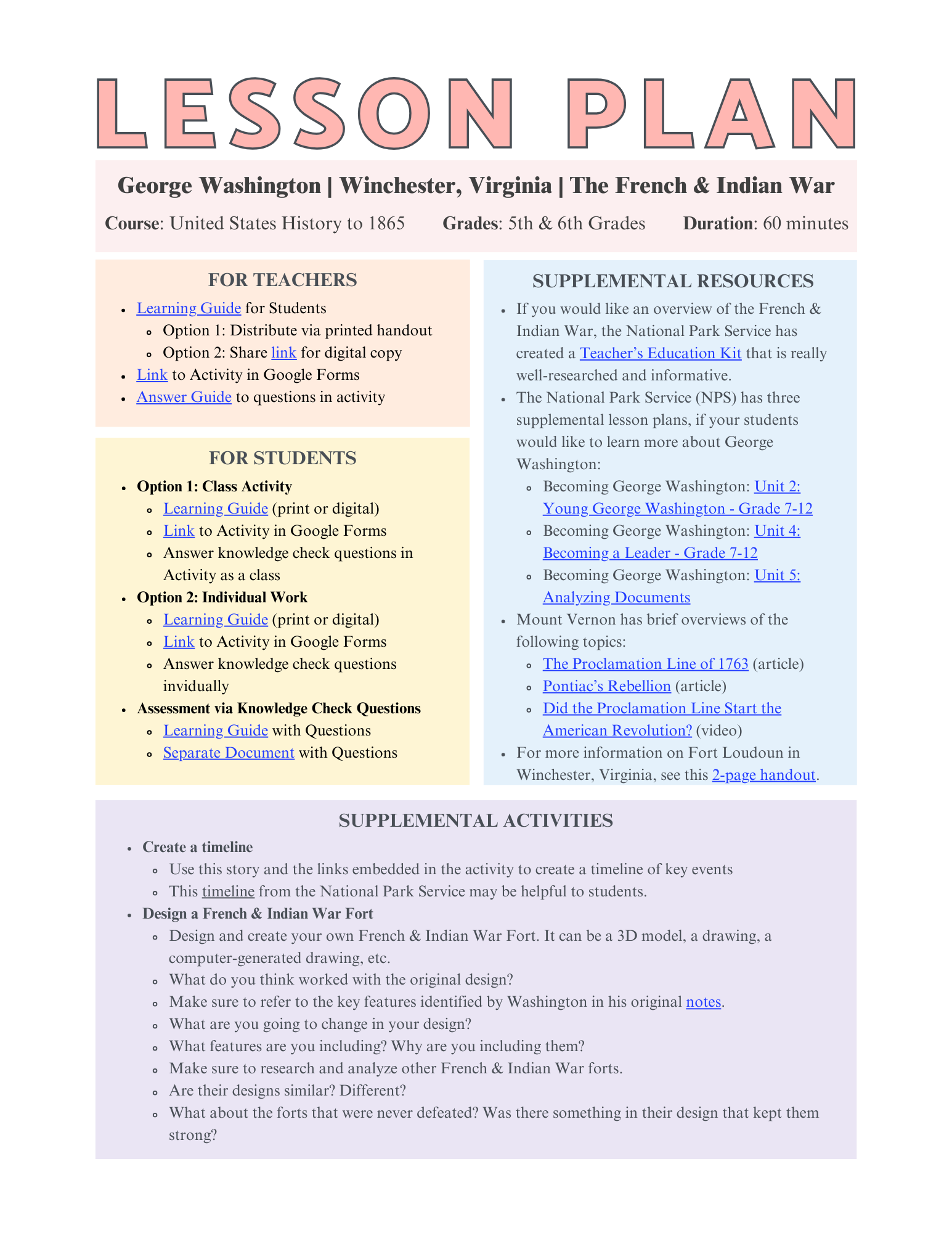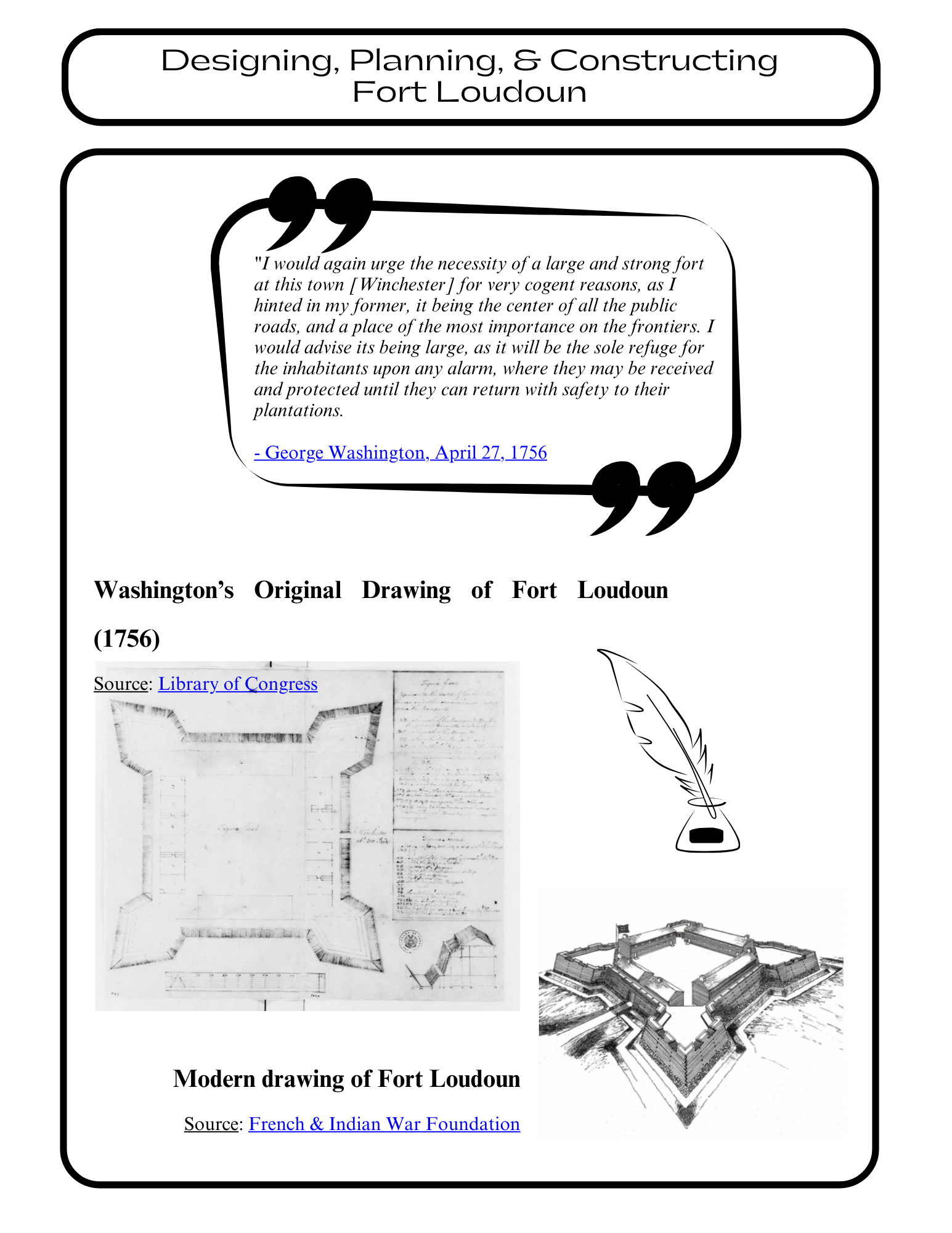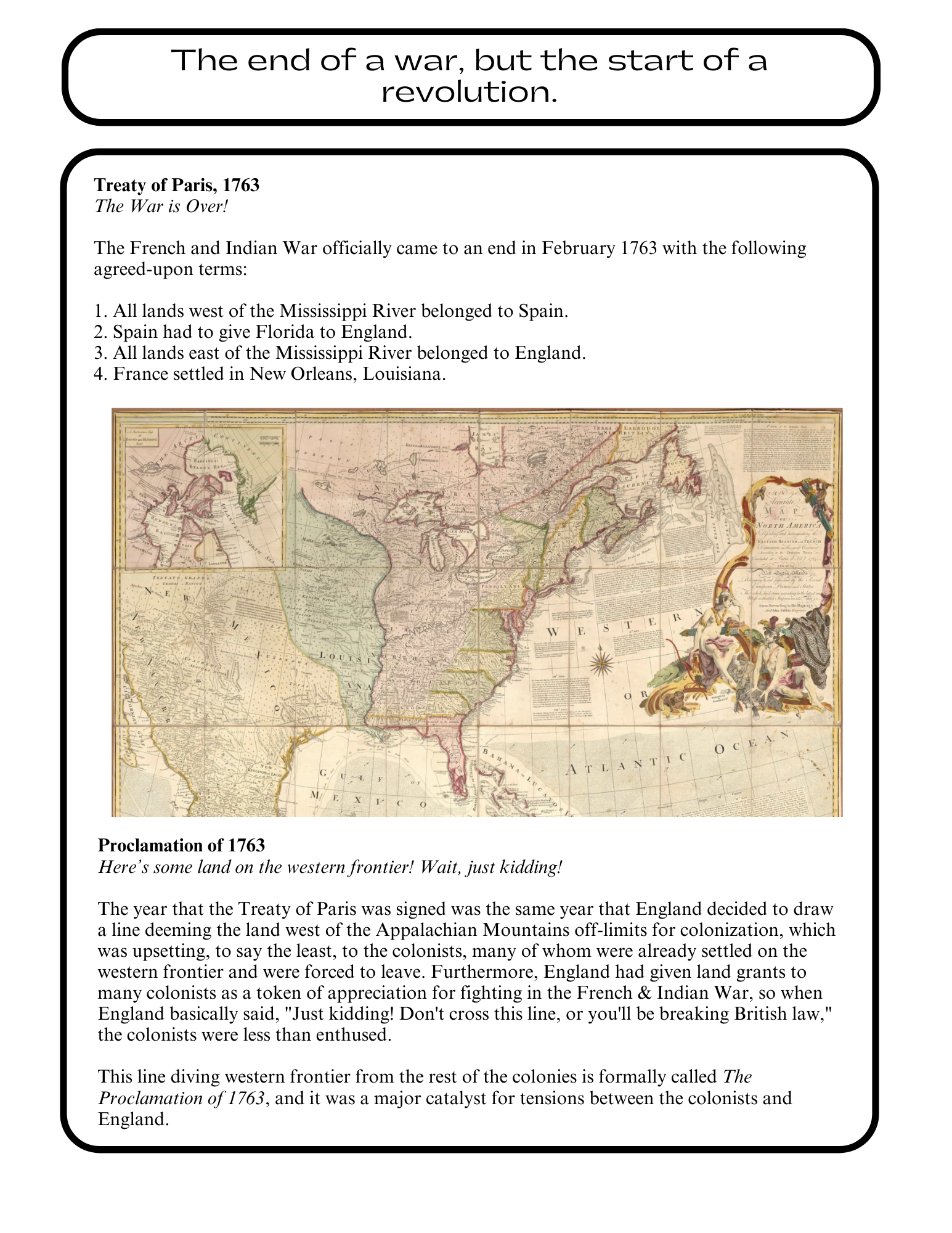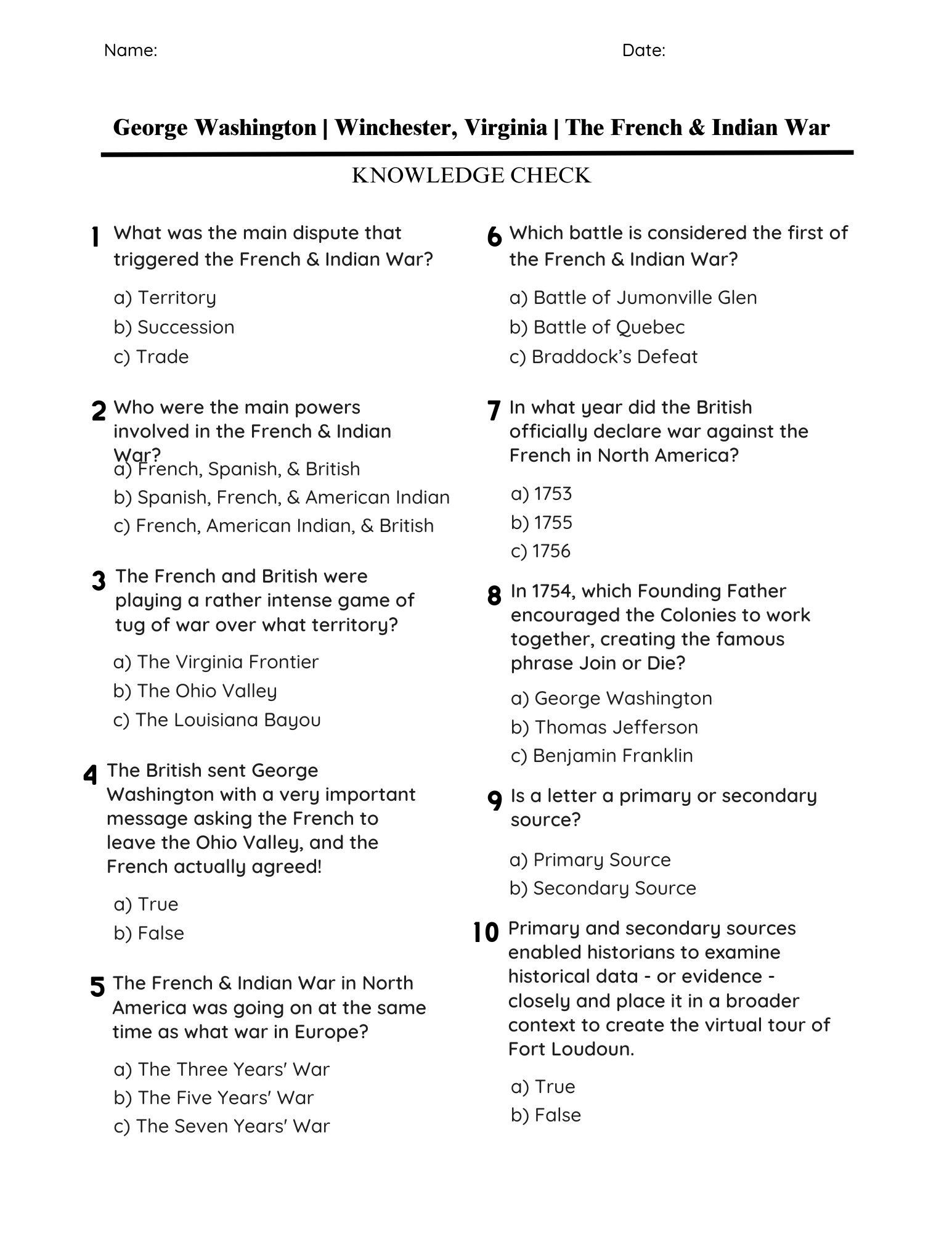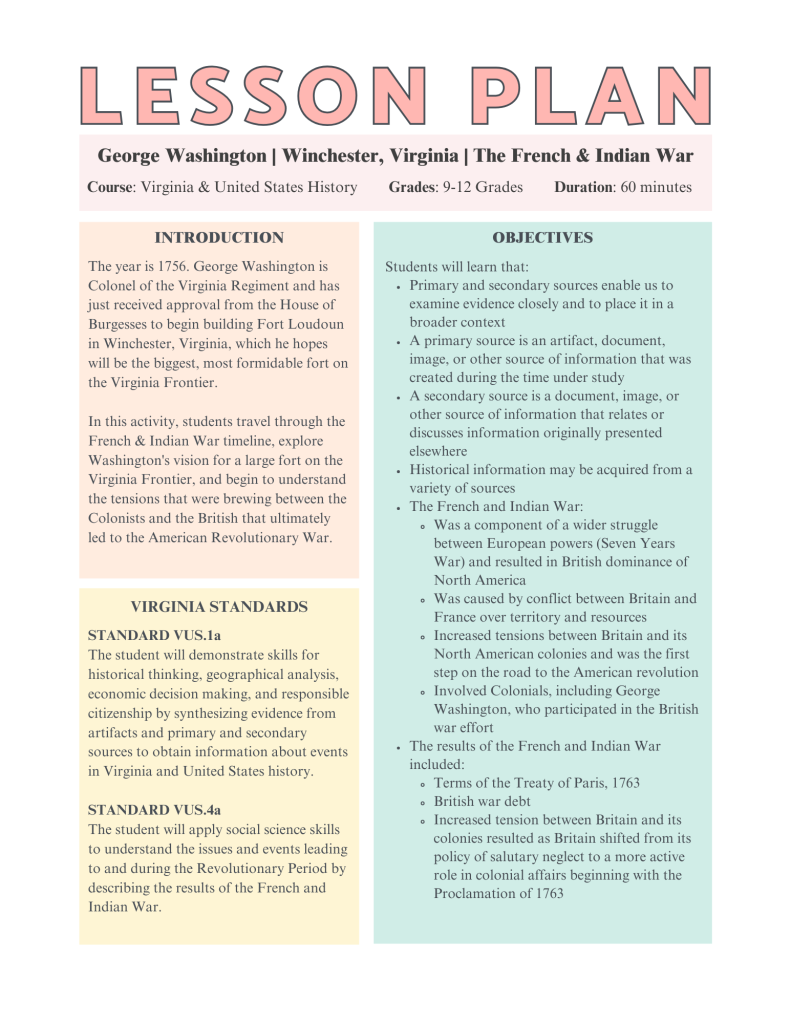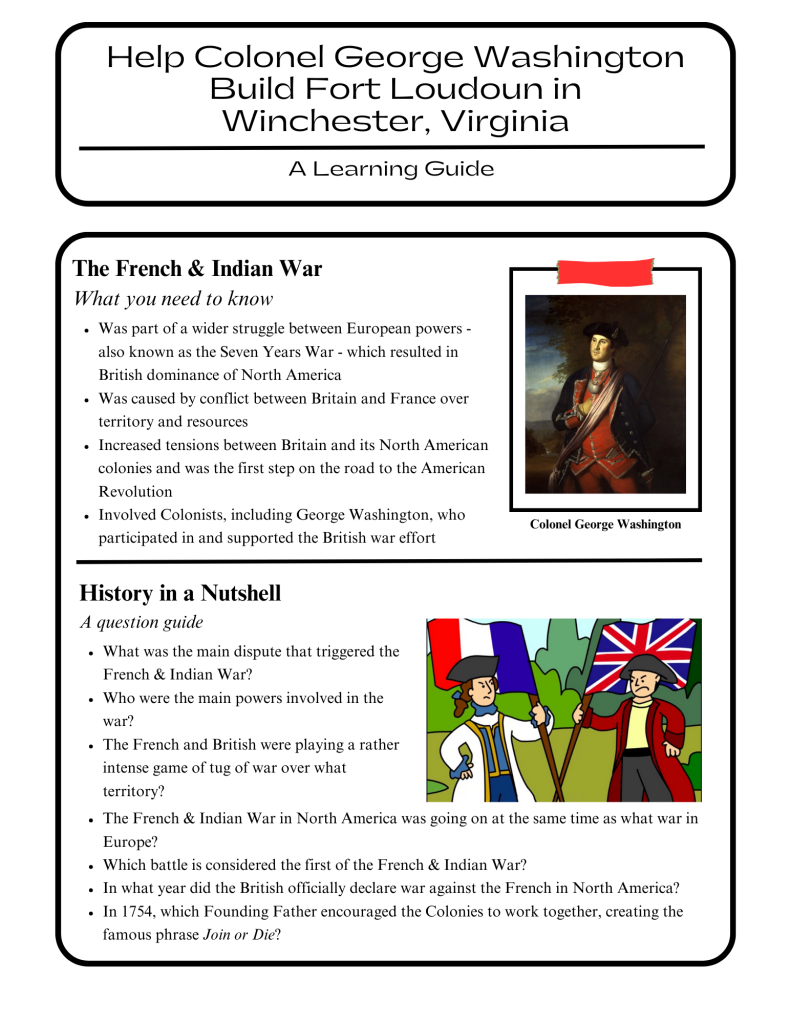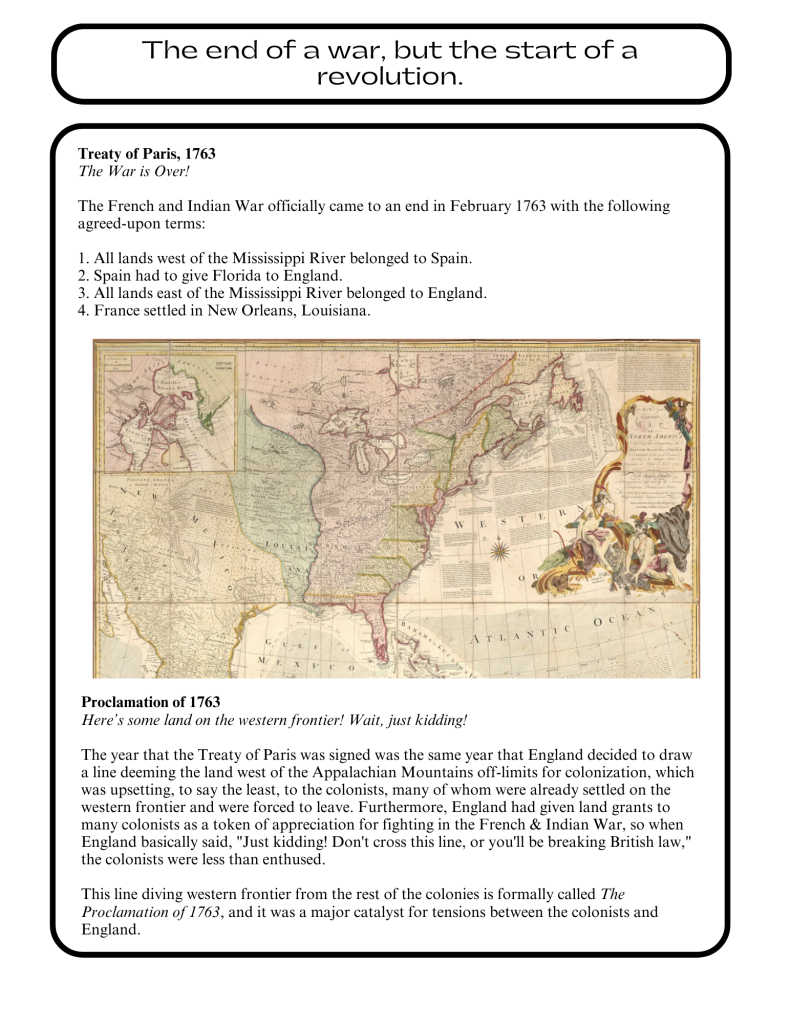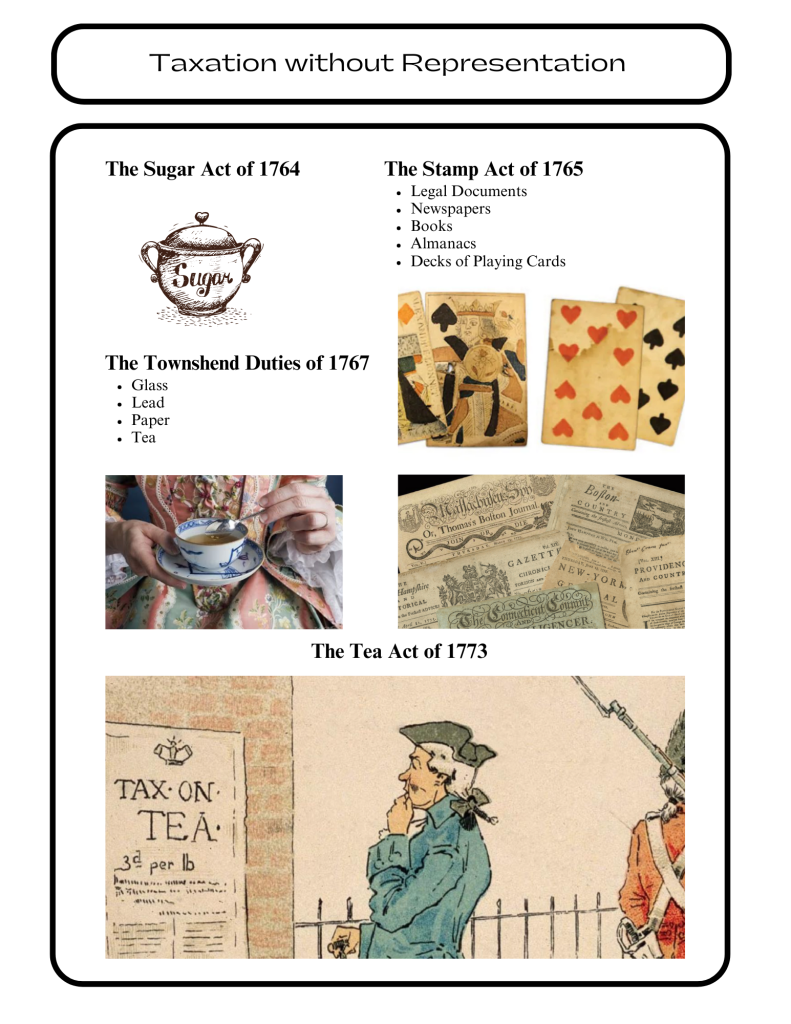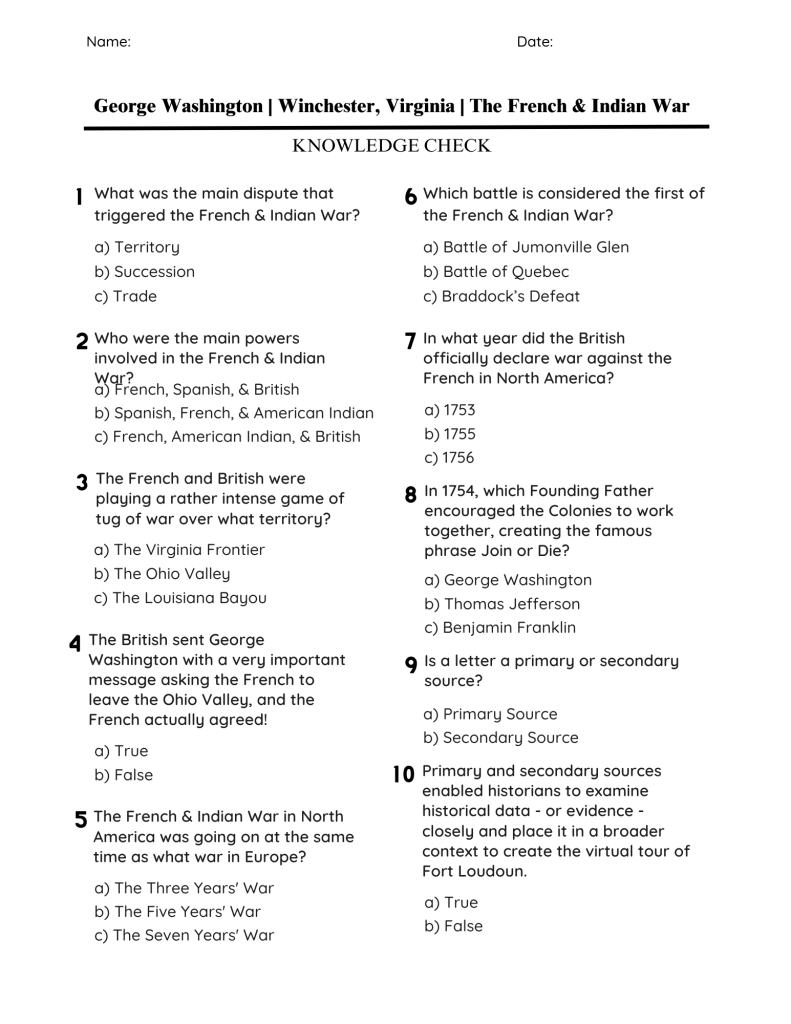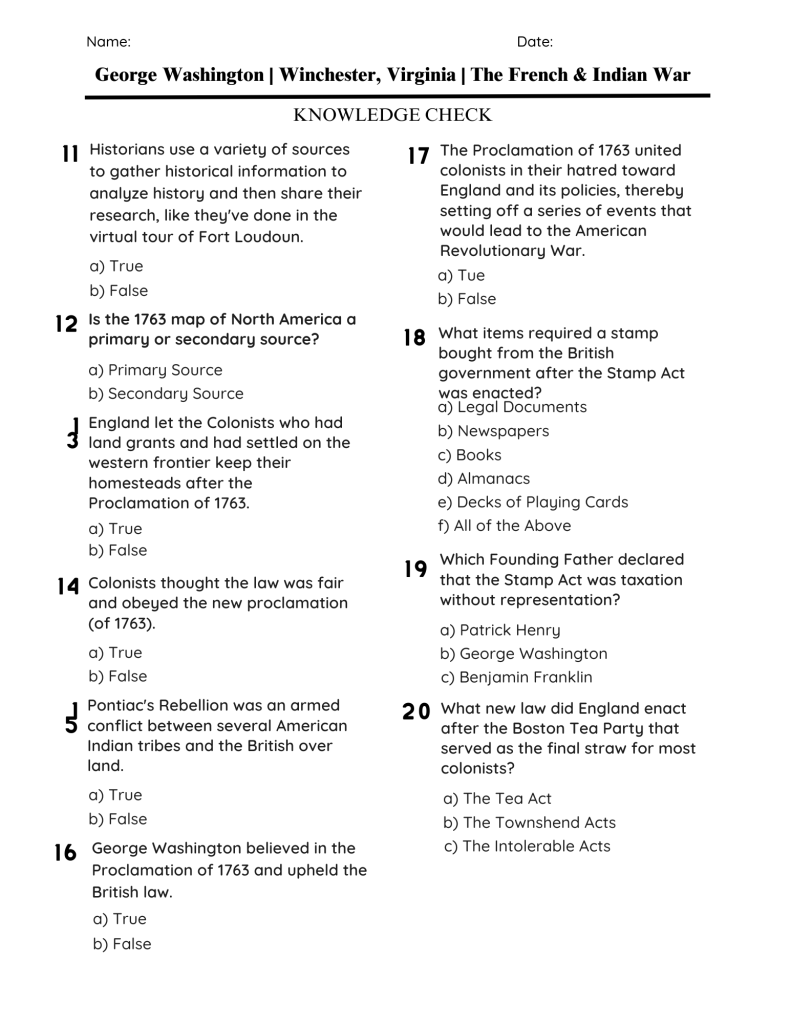George Washington, Surveying, and Colonial Maps
Course: Virginia Studies
Grades: 4-5
Introduction
Everyone knows George Washington, but did you know that his early career as a surveyor in the Shenandoah Valley paved the way for a leadership role in the French & Indian War and the ultimate leadership role in the Revolutionary War?
The year is 1753. A young George Washington, only 21-years-old, is currently a Major in the Virginia Militia and has just received orders from Virginia’s Governor Dinwiddie to deliver a letter to the Commandant – or officer in charge – of the French troops. The French have just built Fort Le Boeuf in the Ohio River Valley, which the British aren’t happy about because they believe that this territory belongs to Great Britain, not France.
In this activity, students will join Washington on his journey to the Ohio River Valley, learn about his experience as a surveyor, and explore original maps from the Colonial era.
Virginia Standards
STANDARD USI.1a | The student will demonstrate skills for historical thinking, geographical analysis, economic decision making, and responsible citizenship by analyzing and interpreting artifacts and primary and secondary sources to understand events in United States history.
STANDARD USI.5e | The student will apply social science skills to understand the factors that shaped colonial America by explaining the political and economic relationships between the colonies and Great Britain.
STANDARD USI.6a | The student will apply social science skills to understand the causes and results of the American Revolution by explaining the issues of dissatisfaction that led to the American Revolution.
George Washington | Winchester, Virginia | The French & Indian War
Course: United States History to 1865
Grades: 5-6
Introduction
The year is 1756. George Washington is Colonel of the Virginia Regiment and has just received approval from the House of Burgesses to begin building Fort Loudoun in Winchester, Virginia, which he hopes will be the biggest, most formidable fort on the Virginia Frontier.
In this activity, students travel through the French & Indian War timeline, explore Washington’s vision for a large fort on the Virginia Frontier, and begin to understand the tensions that were brewing between the Colonists and the British that ultimately led to the American Revolutionary War.
Virginia Standards
STANDARD USI.1a | The student will demonstrate skills for historical thinking, geographical analysis, economic decision making, and responsible citizenship by analyzing and interpreting artifacts and primary and secondary sources to understand events in United States history.
STANDARD USI.5e | The student will apply social science skills to understand the factors that shaped colonial America by explaining the political and economic relationships between the colonies and Great Britain.
STANDARD USI.6a | The student will apply social science skills to understand the causes and results of the American Revolution by explaining the issues of dissatisfaction that led to the American Revolution.
George Washington | Winchester, Virginia | The French & Indian War
Course: Virginia & United States History
Grades: 9-12
Introduction
The year is 1756. George Washington is Colonel of the Virginia Regiment and has just received approval from the House of Burgesses to begin building Fort Loudoun in Winchester, Virginia, which he hopes will be the biggest, most formidable fort on the Virginia Frontier.
In this activity, students travel through the French & Indian War timeline, explore Washington’s vision for a large fort on the Virginia Frontier, and begin to understand the tensions that were brewing between the Colonists and the British that ultimately led to the American Revolutionary War.
Virginia Standards
STANDARD VUS.1a | The student will demonstrate skills for historical thinking, geographical analysis, economic decision making, and responsible citizenship by synthesizing evidence from artifacts and primary and secondary sources to obtain information about events in Virginia and United States history.
STANDARD VUS.4a | The student will apply social science skills to understand the issues and events leading to and during the Revolutionary Period by describing the results of the French and Indian War.

This exhibit was made possible, in part, by a grant from the VA250 Commission in partnership with Virginia Humanities.


